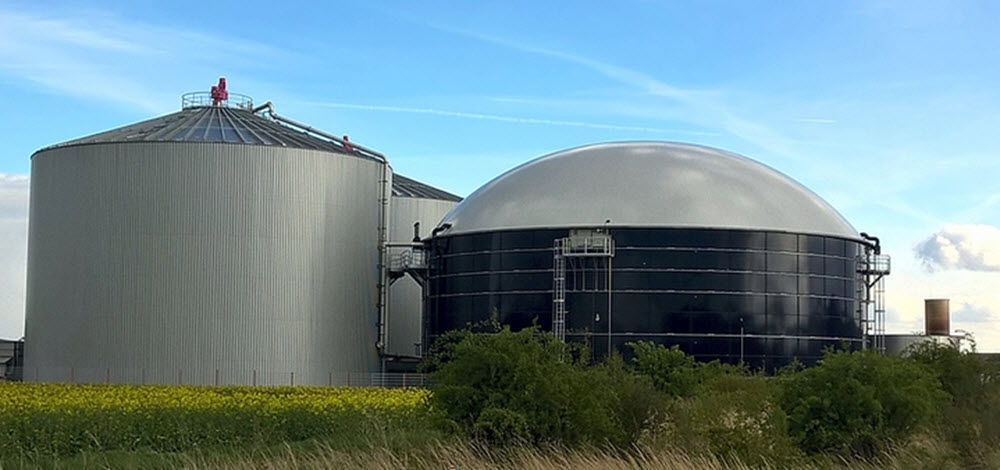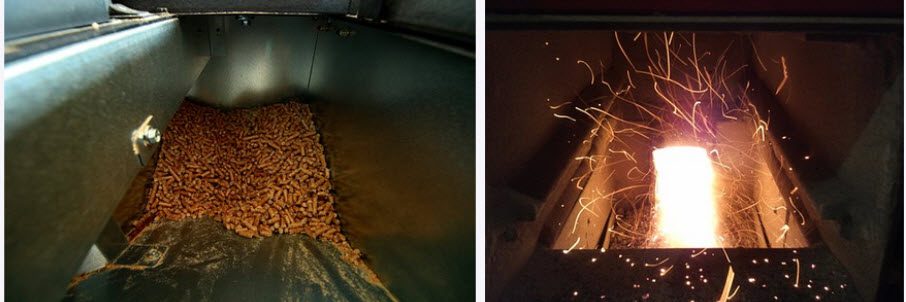Biogas fuel is a mix of gases; mostly methane (CH4) and carbon dioxide (CO2). It can be produced from a wide range of biomass, including otherwise undesirable stuff like mammal faeces and food waste.
Biogas is produced when the biomass is digested by certain organisms in an anaerobe or hypoxic environment.
The greenhouse gases released when biogas is burned originate from the compounds that were absorbed from the atmosphere when the organic matter was alive and growing. Burning biogas will therefore not add additional greenhouse gases to the atmosphere – it will just release what was recently captured. (Unlike the burning of fossil natural gas, which adds to net greenhouse gases in the atmosphere, since it releases compounds that were captured a very long time ago.)

Composition
The composition of biogas vary depending on its source and how it was produced. Temperature, pH-value and substrate concentration are all examples of factors that can impact the final product. In addition to methane and carbon-dioxide, it is common for the biogas blend to include 0-10% nitrogen gas (N2), 0-1% hydrogen gas (H2), 0.1-0.5% hydrogen sulphide (H2S), and 0-0.5% oxygen (O2), by volume. Hydrogen sulphide is not only foul smelling, it is also toxic and corrosive. When burned, it yields sulphur dioxide and sulphuric acid.
When biogas is produced spontaneously in landfills, the methane concentration will typically stay around 50%. When biogas is produced deliberately in special biogas chambers, it is possible to get that number up to 75%, and for reactors with free liquids it can be increased to 80%-90% methane with the help of in-situ gas purification.
Use
Biogas can be burned to release energy, which makes it useful as fuel. It can be used in fuel cells and for heating purposes, e.g. space heating and cooking. In a gas engine, the energy can be converted into electricity.
Compressed biogas
After removal of the carbon dioxide, the remaining biogas can be compressed, and this compressed biogas is suitable for powering motor vehicles.
What is bio-methane?
The product bio-methane is biogas that has been purified and upgraded to commercial natural gas standards.
Biogas plants
Large-scale biogas production takes place at biogas plants, where one or more anaerobic digester tanks house the decaying organic material and the right type of micro-organisms.
Many of the modern plants combine waste-water with more solid organic waste, as this makes it possible to produce even larger quantities of biogas. In one study, a mixture comprised of 90% waste-water from a brewery and 10% cow whey, the production of biogas was 2.5 times larger than for the tanks filled only with brewery waste-water.
What is marsh gas?
Marsh gas is produced naturally in certain wetland conditions, and is therefore also known as swamp gas and bog gas. In everyday language, the term biogas is chiefly used for gas that is produced intentionally for human use, although chemically speaking marsh gas and biogas are very similar.
Marsh gas is chiefly a mixture of methane, hydrogen sulphide, carbon dioxide, and phosphine. Just as with the intentional production of biogas for human use, marsh gas is produced by certain micro-organism in anaerobic or hypoxic conditions. In a wetland, initially porous vegetation can rot to form a crust which more or less blocks oxygen from reaching the decaying organic material underneath.
While wetlands are the main source of marsh gas, similar methane gas producing decay also occur in certain other natural environments, including forest soils, termite nests and the oceans. Ruminants – both wild and domesticated – release methane gas during rumination.

